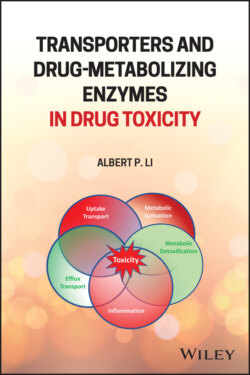Читать книгу Transporters and Drug-Metabolizing Enzymes in Drug Toxicity - Albert P. Li - Страница 95
3.13.1 Metabolism and Toxicity
ОглавлениеWhile the exact mechanism for the hepatotoxic properties of trovafloxacin is not yet fully elucidated, several lines of evidence suggest that enzymatic oxidation of the cyclopropylamine moiety to reactive metabolites is involved. Via synthesizing a drug model of trovafloxacin which contains the cyclopropylamine substructure, Sun et al. showed that chemical oxidants could oxidize the drug model to a reactive alpha, beta‐unsaturated aldehyde [238]. The same laboratory also showed that CYP1A2 and myeloperoxidase could oxidize the drug model to the same reactive aldehyde which could conjugate reduced GSH and form protein adducts [239]. Shaw et al. showed that hepatotoxicity could be induced with a nonhepatotoxic dose of trovafloxacin upon coadministration of nonhepatotoxic doses of lipopolysaccharide (LPS), with significant elevation of TNFa proceeding the onset of liver injuries. Inhibition of TNFa transcription by pentoxifylline or inhibition of TNFa activity by etanercept were found to reduce trovafloxacin/LPS‐induced hepatotoxicity [240–242]. The results suggest that inflammatory insults may exacerbate trovafloxacin hepatotoxicity, with TNFa as a possible mediator for the initiation of the toxic events.
